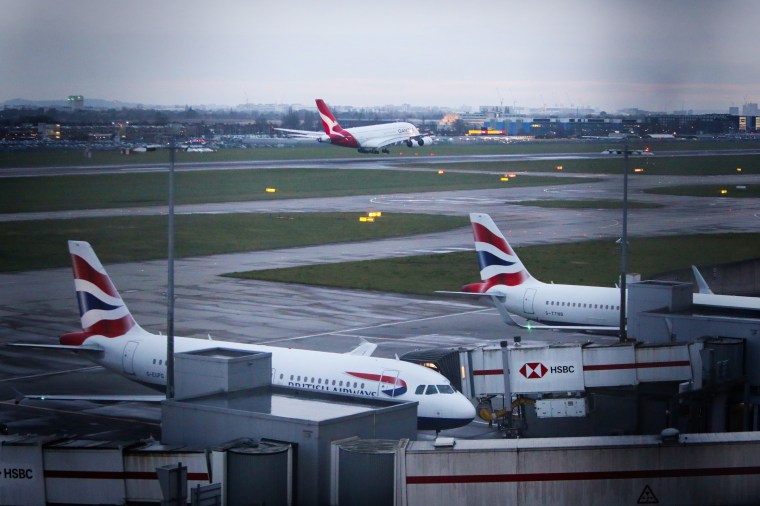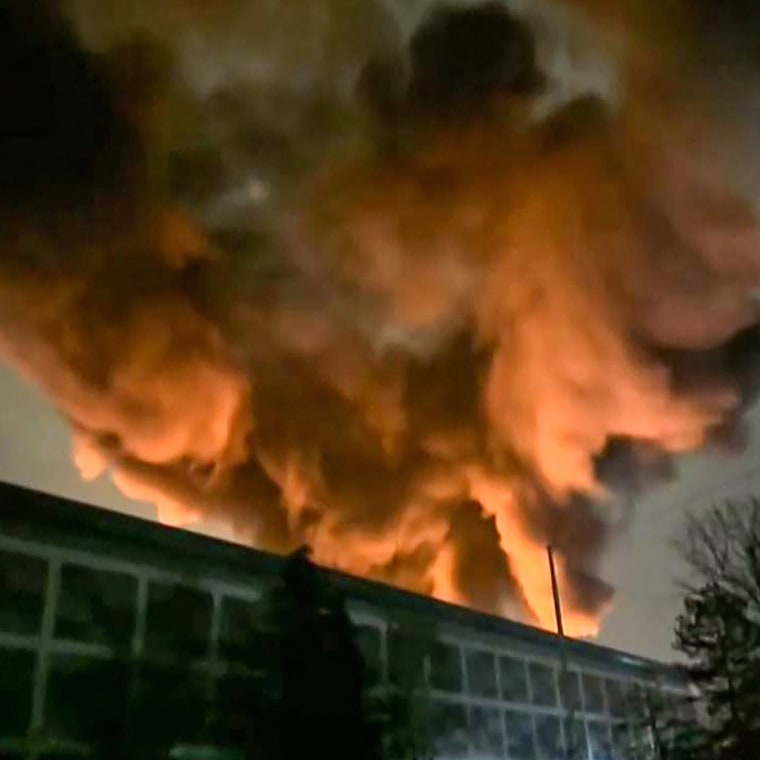LONDON — Heathrow is open and “fully operational” after a massive fire at a nearby electrical substation shut down the airport and triggered chaos across global air travel, leaving a quarter of a million passengers stranded.
By Saturday morning, the lights were back on and the terminals were bustling, with planes taking off and landing as Europe’s busiest airport reopened faster than expected after Friday’s jarring sudden stop.
But the flight disruptions could still take days to unwind, as airlines work to restore normal service by adjusting schedules and reconfiguring flights amid persistent delays and cancellations.
British Airways has warned that “all travelling customers” will likely experience delays, with crews needing repatriation after they were left in cities around the world they weren’t scheduled to be in.

The British flag carrier, whose hub is Heathrow, experienced the largest number of cancellations and diversions on Friday. “To recover an operation of our size after such a significant incident is extremely complex,” the airline said on X.
British Airways said it expects around 85% of its Saturday schedule to run, which leaves about 90 flights subject to potential cancellations or severe delays.
For many stranded travelers, the reopening comes as a major relief. All of Heathrow’s 1,332 scheduled flights were canceled on Friday. About 100 flights were in the air en route to the airport when it shut down, forcing diversions across the U.K., North America, the Middle East and Europe, while some long-haul flights simply turned back to their departure points.
The airport reopened sooner than expected, defying its own earlier warnings of a prolonged closure. Heathrow initially said it would remain shut until 11:59 p.m. Friday, with disruptions potentially lasting days. However, the airport had resumed some flights by Friday evening.
A Heathrow spokesperson said Saturday that it brought in hundreds of additional staff and had added flights to accommodate an extra 10,000 passengers.

The U.K.’s National Grid said Saturday that power supplies had been restored to all customers, including Heathrow and the surrounding neighborhoods, adding it was “deeply sorry for the disruption.”
The utility said it was working with authorities, including the police, to determine the cause of the fire at its substation. Counterterrorism officers were involved in the investigation Friday, but British police have said there was no initial indication of foul play.
The fire broke out just after 11 p.m. local time on Thursday at an electrical substation in North Hyde, about 3 miles from Heathrow.
The London Fire Brigade said the blaze involved 25,000 liters of burning oil used to cool the transformer, and took 10 fire engines and 70 firefighters 12 hours to bring under control.
Heathrow CEO Thomas Woldbye told the BBC on Saturday that the airport uses as much electricity as a city every day, and that while backup systems worked as designed, they were “not designed to power the entire airport.”
Like most major airports, Heathrow has an existing plan to mitigate risks, but this incident exposed its limitations, highlighting critical vulnerabilities and raising concerns about contingency planning at such a vital transport hub.
The owner of logistics and supply chain company PS Forwarding, Jason Bona, told the BBC that the incident made Heathrow a “laughingstock” in the global freight community.
Woldbye said he was “sincerely sorry” for the disruption caused, but that he was “proud” of the response that got the airport up and running again.
Calling the day’s chaos “unprecedented,” he told a U.K. press pool Friday that the incident was “as big as it gets” for the airport.
“Contingencies of certain sizes we cannot guard ourselves against 100%, and this is one of them,” he said. “We don’t have liability in place for incidents like this.”